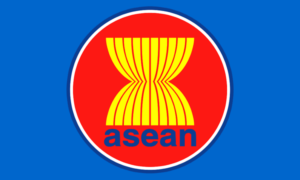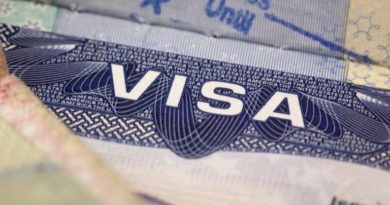OP-ED OPINION-COLUMN | ASEAN Needs New Direction and Political Will
COLLINS CHONG YEW KEAT
ASEAN has grown tremendously in all areas ever since its inception 55 years ago. Throughout, it has been riddled with growing challenges that took different perspectives and shapes. The current scenario calls for a more inclusive and deeper understanding and cooperation among its members, with the aim towards a common framework of understanding and vision which will benefit all and provide a sense of belonging to the grouping, with the hope that ASEAN can present itself as a united and vibrant entity.

Each year brought different challenging scenarios for the grouping and all these remained the contentious part for ASEAN to resolve. There is common understanding and agreement over the crucial need to strengthen regional integration and unity beyond the norms of formal diplomacy and works by the government and its agencies, albeit still riddled by internal divisions and mistrusts.
The centrepiece of ASEAN’s efforts and progress in building a community of regional integration to bring benefits of shared economic development and greater economic participation and integration has been hijacked by external pressures and the impact it caused to individual member states. ASEAN was formed on the basis of strong foundation and belief in the models of consensus, mutual trust and respect and also the spirit of dialogue and understanding in resolving issues and as a way of life. Despite that, it was primarily formed from the common fear of communism and its domino effects. More decisive and comprehensive steps are crucial in narrowing the gap in economic aspects and also widen the base of intra ASEAN trade to further spur growth and development, seen as crucial in raising the standard of living across the region. With fragmented and diverse governance models, the mission to improve the foundation for democratic institutions and framework will face challenges and test the ultimate model of ASEAN of non-infringement and centrality in state affairs.
General agenda of common benefits in adhering to the common principles of peace, harmony, mutual respect, and the establishment of more transparency and understanding to reduce misconceptions and misperceptions have all been the common aim, albeit with differing agenda. The increasing roles of non-state actors and other stakeholders remain vital to bridge the gap between the official status quo of the government’s duties and policymaking apparatus with the reality on the ground.
Greater participation of more parties involved is crucial towards creating more dynamic socio-cultural and economic aspects of enhancement in the region. The greater focus on Track II and III platforms in enhancing mutual partnerships and dialogues in resolving issues and conflict management will open up a wider path of better people to people interaction and ties in the future.
It is a matter of sustainability and survival for ASEAN to carve a new set of bold agenda and transformation to achieve its targeted visions and chart a new way forward to further revitalise the internal integration of ASEAN. It remains imperative in best presenting itself as the leading engine of growth and stability under the current volatility of the global economic and political system, while expanding its scope of responsibility and radar towards a far more enriching and mutually beneficial global reach. ASEAN must be utilised and seen by all the member states as the right platform for them to shoulder their hopes of championing common causes of mutual benefits as well as forging shared common interests, concerns and fears in enabling greater in-depth measures and policies to be charted.
ASEAN is banked on and seen as the crucial balancing role and avenue in the intensifying geopolitical and geostrategic tensions with growing responsibilities and burden against the backdrop of the new regional and global realities.
In setting forth the future direction of ASEAN and seeing the pressing need to find the cohesive unifying factor, internal mechanisms in facing the volatility of the global uncertainties and the prevailing national interests and mutual distrusts are to be recognised and worked on. The ASEAN Community vision, while consisting of visionary solidarity and regional integration values and objectives, is facing a challenging and treacherous path ahead with numerous structural and deep-lying thorny issues and divides yet to be resolved. The three pillars of strength to be achieved, the political, economic and socio-cultural aspects have their own challenges to be met.
Openness, cultivation of shared interests and harmony, transparency, greater interdependence, and intensification of confidence and trust are some of the major strategies that must be implemented to chart the path ahead for ASEAN and to further bolster the solidarity within the policymakers and states.
For ASEAN to continue being relevant, internal consolidation of strengthening the ASEAN spirit must be seen as an ongoing effort and for that to happen, the level of interdependence among member states must be further enhanced and preserved to reduce tensions, conflicts and rivalry. Intra-regional trade must be boosted to promote a fair share of mutual interests and benefits and to further instill the sense of interdependence and cooperation. Intensification of support and right methodologies must be applied in reducing disparity of socio-economic performance among member states for them to be able to progress effectively and further increase economic activities and growth in the region.
While the harmonisation and integration of national interests of member states into the sphere of ASEAN’s interest as a whole seems to be a forgone conclusion, the process of pooling of sovereignty and interests is the crucial path ahead for ASEAN to survive in the wake of growing bipolarity and the external tug and tussle for power.
By instilling a deeper sense of mutual and collective importance of ASEAN, it needs to get the incentivisation and the pulling factor for member states to commit and to reduce redundancies and fears of backlash from external powers that they have depended upon for decades. Cooperation in the field of low politics including sports, education, environment protection and awareness and other areas of easier collaborative exchanges will create ripple effects in further integrating collective understanding and efforts towards regional trust, confidence and understanding. Subsequently, value-based approaches and platforms will be made accessible and easier for an inclusive method of providing the means and incentives for the ASEAN community in all member states to play a greater part in regional progress.
While government-to-government relations have been encouraging, further measures are crucial to enhance people-to-people relations to increase the sense of ASEAN spirit and togetherness among the populace. Further focus should be directed towards the strengthening of Track II diplomacy in bolstering understanding, tolerance, acceptance and awareness among non-governmental entities and parties. The spill-over effects of integration and cooperation into areas of high politics will be beneficial with greater sense of integration, transparency, cohesion and better economic ties and openness in trade that will spur economic growth.
It would certainly take more than political will and commitment alone from member states to weigh the cost benefit calculations and in balancing the fulcrum of potential returns and backlash from the moves initiated. ASEAN is indeed at a vital crossroads and in the midst of a major transition to a new role in the region and beyond, a reality made more vital and dire in the face of the heightened intensity of geopolitical and big power competition.
A highly integrated and interdependent organisation with new bold visions and strong commitment might be the aspirational outcome for all, but will be hard to achieve until the structural and systemic challenges remain unsolved. With greater focus and efforts in promoting collective trust and interdependence and reducing the grip and influence by external powers, greater openings can be initiated. The promotion of more confidence building measures in tackling distrusts, mistrusts and mutual suspicions and the creation of more mutually beneficial policies will help to ease the path with more shared responsibilities.
The future of ASEAN rests upon the wisdom and foresight of the current and future policymakers to continue the drive towards modernity, change and relevance by charting the way forward with new ideas based on new realities, taking into account glimpses of the past without compromising on the core values, pillars and visions that matter to ASEAN. It is high time for the stakeholders and masses in rising to the occasion of transforming ASEAN and ensuring its role and relevance will continue to be at the centre stage of peacemaking and conflict prevention. In further uplifting the pillar of peace and stability, and the continued preservation of regional resilience, ASEAN needs new directions and mechanisms that will only be made possible from a new bold perspective and admission of its current weaknesses and barriers.
COLLINS CHONG YEW KEAT
[email protected]>
COLLINS CHONG YEW KEAT
UNIVERSITY OF MALAYA
Name : Collins Chong Yew Keat
Address : Office of the Registrar, Level 7, Chancellory, Universiti Malaya 50603
Kuala Lumpur, Malaysia
Contact No : +6012-6687390
E-mail : [email protected]
.
|


 Memento Maxima Digital Marketing
Memento Maxima Digital Marketing Ads by: Memento Maxima Digital Marketing
Ads by: Memento Maxima Digital Marketing






